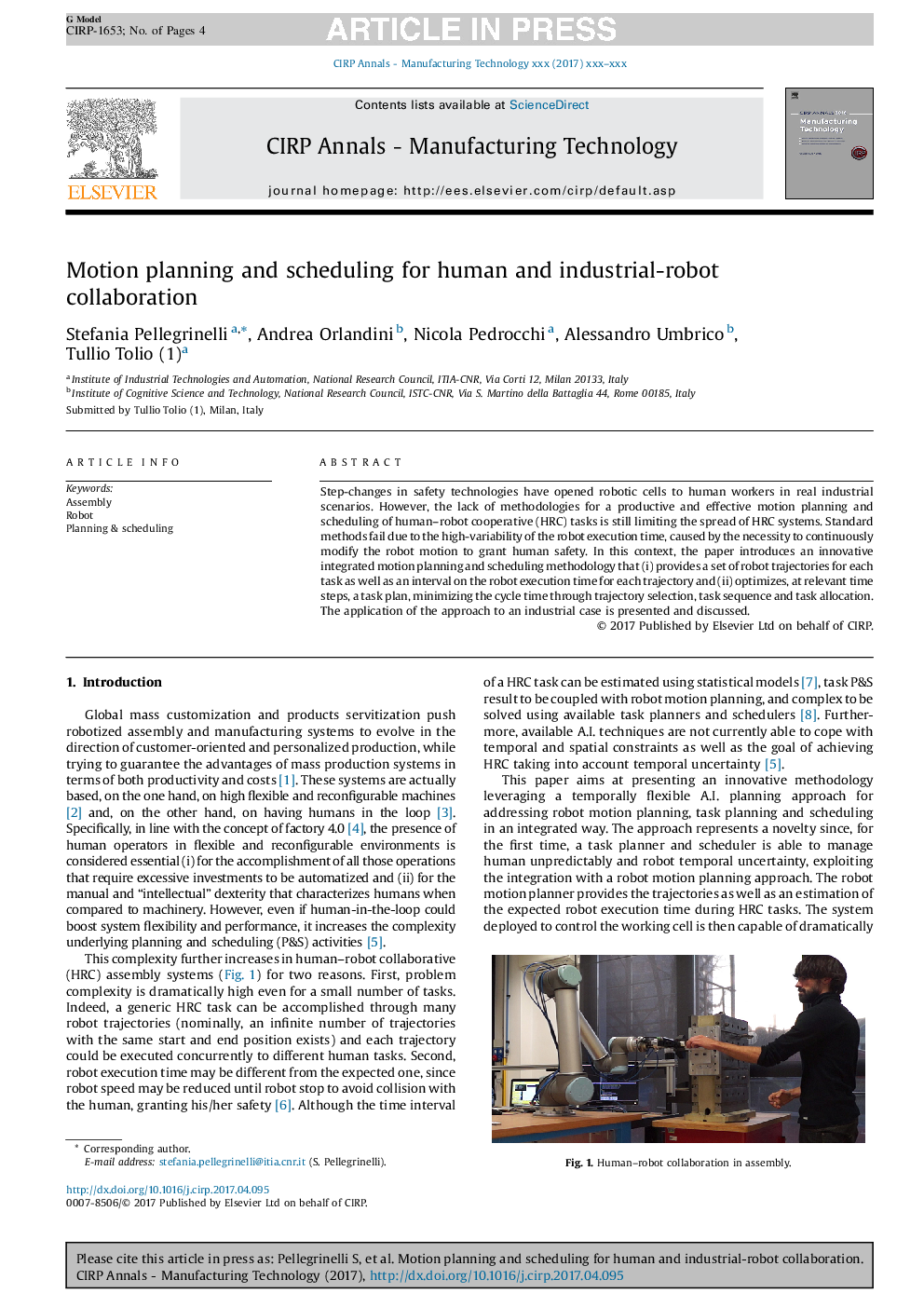| Article ID | Journal | Published Year | Pages | File Type |
|---|---|---|---|---|
| 5466921 | CIRP Annals - Manufacturing Technology | 2017 | 4 Pages |
Abstract
Step-changes in safety technologies have opened robotic cells to human workers in real industrial scenarios. However, the lack of methodologies for a productive and effective motion planning and scheduling of human-robot cooperative (HRC) tasks is still limiting the spread of HRC systems. Standard methods fail due to the high-variability of the robot execution time, caused by the necessity to continuously modify the robot motion to grant human safety. In this context, the paper introduces an innovative integrated motion planning and scheduling methodology that (i) provides a set of robot trajectories for each task as well as an interval on the robot execution time for each trajectory and (ii) optimizes, at relevant time steps, a task plan, minimizing the cycle time through trajectory selection, task sequence and task allocation. The application of the approach to an industrial case is presented and discussed.
Related Topics
Physical Sciences and Engineering
Engineering
Industrial and Manufacturing Engineering
Authors
Stefania Pellegrinelli, Andrea Orlandini, Nicola Pedrocchi, Alessandro Umbrico, Tullio Tolio,
